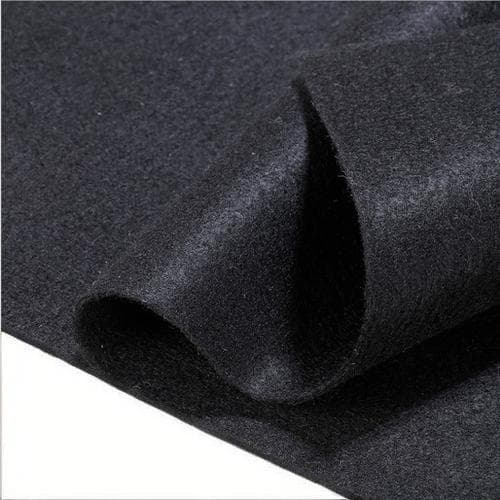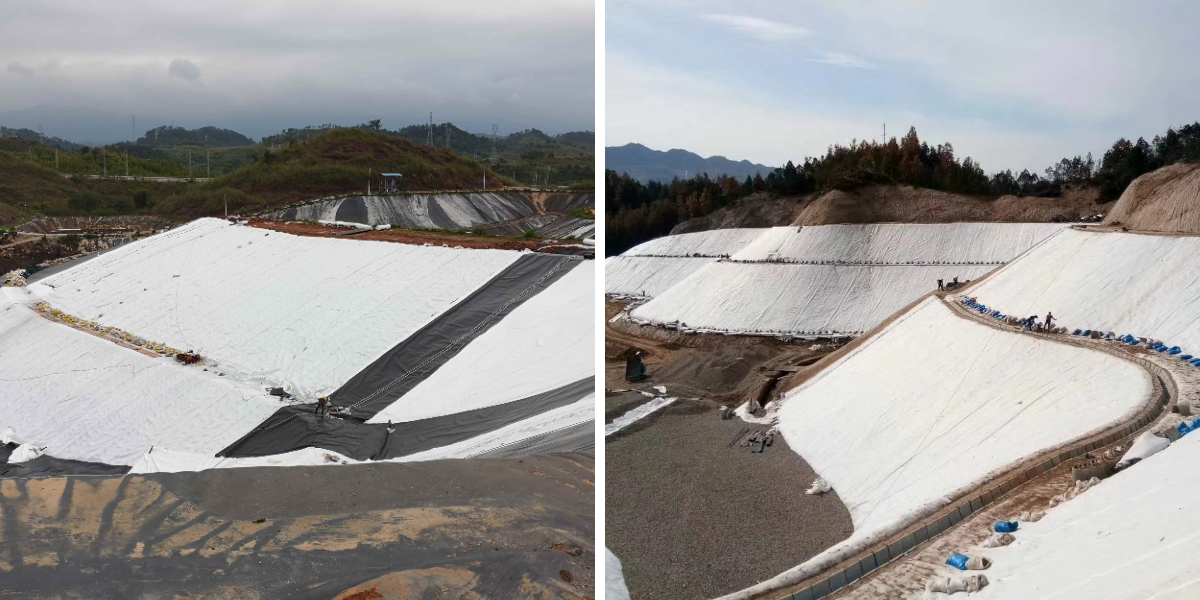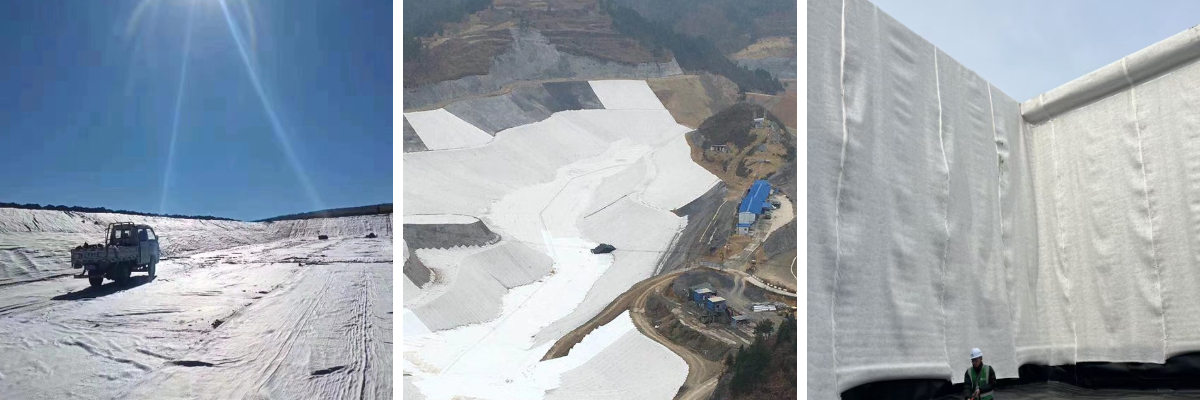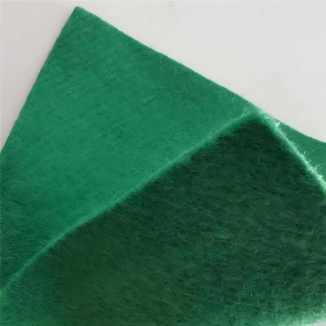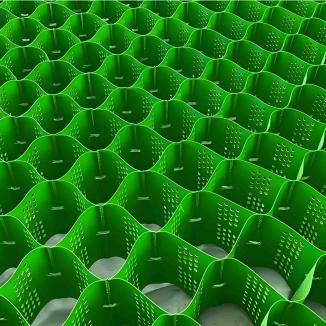Geotextile for Roads
1. Convenient construction: Lightweight, small in size, easy to transport and lay, can greatly shorten the construction period and improve construction efficiency.
2. Low cost: Compared with traditional engineering materials, the price of geotextiles is relatively low, and it can reduce the amount of materials used and construction costs.
3. Good environmental friendliness: Using high molecular weight polymers as raw materials, the production process causes minimal environmental pollution, and the materials themselves are recyclable, meeting environmental protection requirements.
4. Multifunctionality: It integrates multiple functions such as filtration, drainage, isolation, reinforcement, and protection, and can play a comprehensive role in different engineering scenarios, improving the overall quality and stability of the project.
Product Introduction:
Geotextile for Roads is a permeable geosynthetic material made of synthetic fibers (such as polyester, polypropylene, etc.) through needle punching, weaving, or non-woven processes. The finished product is in the form of a cloth, with a width of generally 4-6 meters and a length of up to 50-100 meters. It has five functions of filtration, drainage, isolation, reinforcement, and protection, and is an indispensable basic material in modern civil engineering, water conservancy engineering, transportation construction, and environmental protection fields.
Core Features
1. High strength and ductility
Made of plastic fibers such as polyester and polypropylene, it can maintain high strength and elongation in both dry and wet conditions, with high tensile strength and is not easily broken.
2. Corrosion resistance and antimicrobial properties
Long term use in acidic and alkaline environments and humid soils is not easy to corrode, and can resist microbial and insect damage, extending the service life.
3. Permeability and Filtration
There are gaps between fibers that allow water to pass through but block soil particles, fine sand, etc., forming efficient drainage channels while preventing soil erosion.
4. Lightweight and easy to construct
The material is soft and easy to transport, cut, and lay, and can be manually operated to reduce construction costs.
Flexible specifications: with a width of up to 9 meters and a unit area mass of 100-1000g/m ², it can adapt to different engineering needs.
5. Environmental protection and weather resistance
Non toxic and odorless, no pollution to the environment; Resistant to high temperatures, freezing, aging, and suitable for extreme weather conditions.
Product Parameters:
project | metric | ||||||||||
Nominal strength/(kN/m) | |||||||||||
6 | 9 | 12 | 18 | 24 | 30 | 36 | 48 | 54 | |||
1 | Longitudinal and transverse tensile strength / (kN/m) ≥ | 6 | 9 | 12 | 18 | 24 | 30 | 36 | 48 | 54 | |
2 | Maximum elongation at maximum load in longitudinal and transverse directions/% | 30~80 | |||||||||
3 | CBR top penetration strength /kN ≥ | 0.9 | 1.6 | 1.9 | 2.9 | 3.9 | 5.3 | 6.4 | 7.9 | 8.5 | |
4 | Longitudinal and transverse tearing strength /kN | 0.15 | 0.22 | 0.29 | 0.43 | 0.57 | 0.71 | 0.83 | 1.1 | 1.25 | |
5 | Equivalent aperture O.90(O95)/mm | 0.05~0.30 | |||||||||
6 | Vertical permeability coefficient/(cm/s) | K× (10-¹~10-), where K=1.0~9.9 | |||||||||
7 | Width deviation rate /% ≥ | -0.5 | |||||||||
8 | Unit area mass deviation rate /% ≥ | -5 | |||||||||
9 | Thickness deviation rate /% ≥ | -10 | |||||||||
10 | Thickness coefficient of variation (CV)/% ≤ | 10 | |||||||||
11 | Dynamic perforation | Puncture hole diameter/mm ≤ | 37 | 33 | 27 | 20 | 17 | 14 | 11 | 9 | 7 |
12 | Longitudinal and transverse fracture strength (grab method)/kN ≥ | 0.3 | 0.5 | 0.7 | 1.1 | 1.4 | 1.9 | 2.4 | 3 | 3.5 | |
13 | Ultraviolet resistance (Xenon arc lamp method) | Longitudinal and transverse strength retention rate% ≥ | 70 | ||||||||
14 | Ultraviolet resistance (fluorescence UV lamp method) | Longitudinal and transverse strength retention rate% ≥ | 80 | ||||||||
Product Applications:
1. Civil Engineering
Roadbed reinforcement: As a foundation reinforcement material for railways, highways, and airport runways, it enhances bearing capacity and stability.
Backfilling of retaining wall: Lay geotextile behind the retaining wall to prevent soil loss and improve structural safety.
Slope protection: Wrap the gravel slope to prevent soil erosion and low-temperature freezing damage.
2. Water conservancy engineering
Dam anti-seepage: Combined with geomembrane to form a composite waterproof layer to prevent leakage.
Drainage system: As a filter layer for water wells and pressure relief wells, it improves drainage efficiency.
River management: resist water erosion and protect the integrity of riverbank structures.
3. Transportation construction
Road maintenance: repair asphalt pavement cracks, prevent reflection cracks from spreading, and extend pavement life.
Soft foundation treatment: laying geotextile on weak foundation to enhance foundation strength and reduce settlement.
4. Environmental protection field
Landfill: Wrap waste to prevent harmful substances from seeping into the soil and protect the ecological environment.
Wastewater treatment: As a filtering material, it improves the efficiency of wastewater treatment.
5. Life scenarios
Garden vegetable field: laid on the soil surface, breathable and permeable, and inhibits weed growth.
Emergency leak prevention: Temporarily cover the leaking points on the roof or balcony to prevent water damage.
Moving and storage: package fragile items, scratch resistant, shock-absorbing; Lay it at the bottom of the carriage to prevent the goods from sliding.
Outdoor camping: Lay it under the tent to prevent moisture and mud, or cut it into picnic mats.
Geotextiles have become the "invisible heroes" of modern engineering construction due to their unique performance advantages and wide application scenarios. From supporting thousands of miles of highways to guarding family gardens, it proves with its strength that practical technology should be close to life. In the future, with the continuous advancement of material technology, geotextiles will play a key role in more fields, creating a safer, more environmentally friendly, and efficient living environment for humanity.



